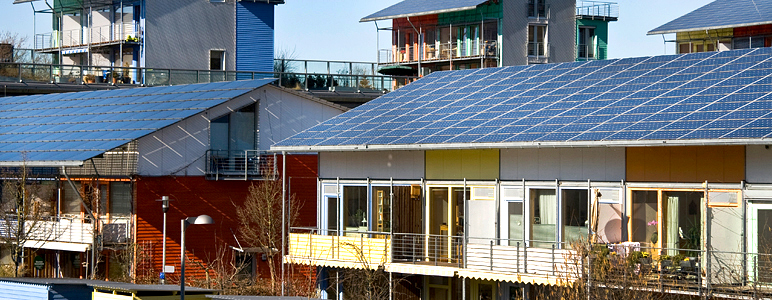


Nationwide, solar photovoltaic (PV) systems are being installed in record numbers, with the total solar capacity approaching 50,000 megawatts of power. According to the Solar Energy Industries Association, that’s enough solar output to run more than 9 million homes.
Even with this solar proliferation, and that the cost of PV panels has fallen by more than 55 percent in the past five years, lower-income earners–especially those who reside in multifamily rental housing–have largely been left out of the clean energy boom.
Low-income renters often are disproportionately affected by energy costs, paying up to four times the proportion of their income on energy relative to their higher-income peers. And, since they don’t own their homes, they can’t buy into solar the way homeowners can, with favorable lease agreements, large government incentives and special loan offerings.
Thankfully, a variety of programs and resources for on-site solar installations are providing avenues for increased solar access for apartment residents and offering potentially greater profits for multifamily property owners. In California, multifamily residences account for 30 percent of all households.
VIRTUAL NET METERING
Bringing solar to low-to-moderate income tenants in apartments presents a variety of challenges. Foremost is that most properties have a separate electricity meter for each residence, plus one for powering the facility’s common areas and exterior lighting. It’s impractical to connect each meter to its own solar system.
However, in many states a special utility billing arrangement, called virtual net metering, allows energy generation credits from a single solar system to be effectively shared by accounts with separate meters. Both property owners and their tenants receive credit for a percentage of the PV output and realize direct utility bill savings.
CSE estimates there are over 250,000 multitenant residential and commercial properties in California that could take advantage of solar virtual net metering, yet only a few hundred are doing so now.
BENEFITS FOR TENANTS & OWNERS
For tenants, virtual net metering provides long-term utility savings and greater electricity rate stability. Typically, tenants receive a proportionate share of monthly solar energy in the form of kilowatt-hour credits on their bill, ideally enough to more than cover any increase in rent that the property owner may apply to recoup the investment.
For the property owner, solar on multifamily buildings can offer significant savings in operational costs. Multifamily property owners typically spend about 10 percent of annual operating costs on energy, which can be cancelled out by on-site generation. With solar, once the initial investment is recovered, typically over 5-10 years, property owners have essentially free energy for 10-15 years or more.
In addition to virtual net metering savings, property owners can take advantage of various solar loan programs, low-cost leases, property assessed clean energy (PACE) programs and other financial mechanisms to pay for system installation, as well as the potential to collect a 30 percent federal investment tax credit and accelerated depreciation allowances that can greatly reduce costs. Even nonprofit multifamily housing owners, who may be ineligible for federal tax benefits, can monetize the tax credit and depreciation though a solar lease or power purchase agreement with a third party that can claim the deductions and may offer a discounted price.
RESOURCES TO THE RESCUE
CSE is engaged on several fronts to break down barriers to solar for multifamily housing. Through a $712,000 award from the U.S. Department of Energy SunShot Initiative, CSE is leading a project to expand use of virtual net metering. We have developed a set of toolkits for tenants and multitenant property owners that guide owners and residents through the solar process.
At our Solar Energy Center’s Multifamily webpage, you can click through a series of fact sheets that provide basic information about solar, system costs and incentives, financing and connecting with a solar contractor. To make contacting a solar contractor easier, we’ve linked up with the online solar marketplace EnergySage where you can enter basic information about your property and get competing quotes for a PV system from prescreened installers in your area anywhere in the U.S. CSE also teamed up with the Interstate Renewable Energy Council and Spark Northwest in creating guidelines for local governments and housing providers in the Seattle, Wash., area outlining ways to enable greater solar access for renters and multifamily residents and low-to-moderate communities.
Supporting policies and programs for PV installations at multifamily housing can provide equal solar energy access for all consumers, increase employment in renewable energy, decrease greenhouse gas emissions and help build a more resilient electrical grid.

